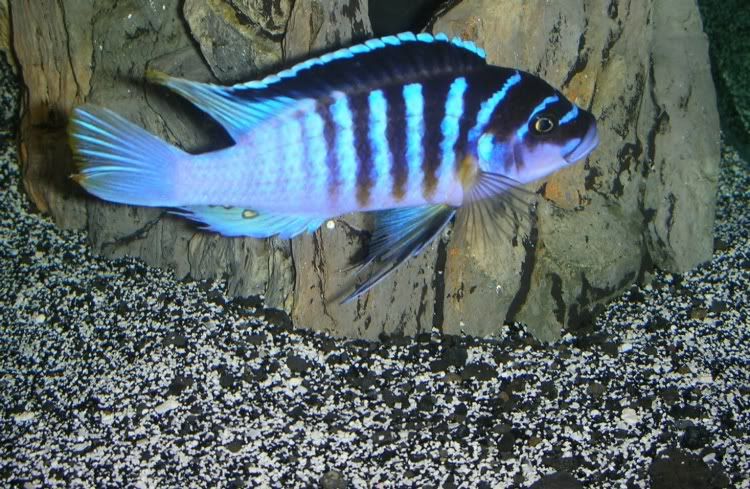THUNDER said:
When you see them being aggressive, is it deadly? Do they become aggressive with each other constantly?
Depends largely on the particular set up (quantity of cichlids, tank size, aquascape, etc), species and even personality of each fish. Some species by default are more aggressive than others (auratus for example are very aggressive, while acei are mostly peaceful).
Knowing the aggressive potential of the species may help moderate the aggression in the tank. Some are highly conspecific aggressive (meaning they may tolerate other species but are aggressive to their own kind...example, pseudotropheus demasoni).
Adequate numbers also help out. A 55-gal with 4 various mbuna will probably be a more aggressive tank than a 55-gal with 12 mbuna.
With the right species and quantity, aggression can be balanced. Incorrect set ups, however, can result in killing sprees.
THUNDER said:
do they go after your hand and arm when you work in the tank?
They may nip mostly out of curiousity and to see if the hairs on your arms (or even the skin itself) are edible. In the wild the food they eat isn't very nutritous. To counter that, they constantly graze and sand sift (and in my opinion, are instinctively programmed to be perpetually hungry). I've never had an african cichlid nip as an act of malice.
THUNDER said:
Just wondering why aggressions are still with these fishies, since they are all raised with alot of each other in a tank. These fishies should know that by being territorial will limit their swimming spaces. I guess they would rather stay in their own spaces and not share to swim around the giant tank. ~sighs~ I wish they would learn.
A hyper-dominant mbuna can claim an entire tank (it will venture anywhere in the tank at will, while the other occupants are hiding in one of the top corners of the tank). That's a worse case scenario. I had one socolofi claim 25% of a 125-gal tank as its exclusive terriotory, while my dominant socolofi preferred (and defended) a cave with the volume of a grape fruit. Size of territory depends on the ambitions of the particular fish and rivals.
The aggressive nature of mbuna is based on their instincts which were shaped from their originating environment (Lake Malawi). A good portion of what they eat comes from algae growing on rocks and the invertebrates which may be found among the algae. Rocks provide a source of food, haven and breeding grounds. Aggressive behavior is a survival tool in the wild. Other types of cichlids from the same lake (haps and peacocks) are more open water fish and are less territorial than mbuna.
Many mbuna are still collected from the lake (though wild caughts cost more than tank bred fish).
THUNDER said:
These cichlids look very much like a saltwater fishies, but sadly to be aggressive. Its very hard to find a fish to be beautiful as saltwater and be peaceful.
Some techniques to minimize aggression include: adding the more peaceful species first and the aggressive ones later (and always add them in groups, a single new fish may be viewed as an intruder by the entire tank); and having more females than males per species (1 male per 3 females). This takes knowing precisely what species you are getting (avoid hybrids).
One of my zebra (semi-aggressive in my tank):


